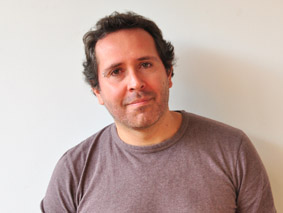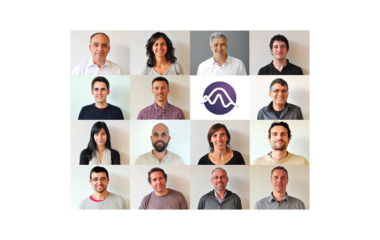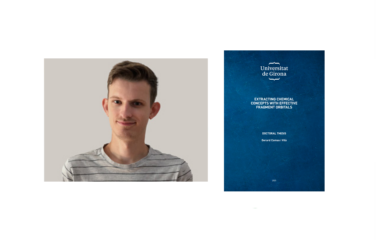Since October 2006 he is an Associate Professor of the Department of Chemistry and a member of the Institute of Computational Chemistry and Catalysis of the UdG. He has been the director of the Master’s in Advanced catalysis and Molecular Modelling from 2013-2019.
- sec.iqcc@udg.edu
- +34 972 41 83 57
Salvador, Pedro
Chemical concepts from wavefunction analysis
Contact info:
Dr. Pedro Salvador
pedro.salvador@udg.edu
Tel. (+34) 972 41 83 58
Website
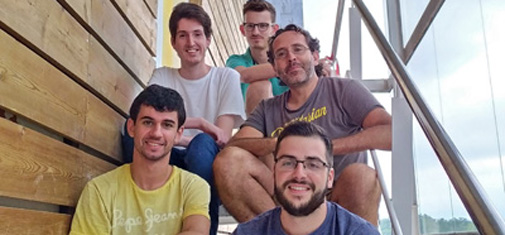
Selected publications
An Objective Alternative to IUPAC’s Approach to Assign Oxidation States
Angew. Chem. Int. Ed., 2018, 57, 10525-10529
DOI: 10.1021/acs.jctc.9b00139
Eloy Ramos-Cordoba, Pedro Salvador, Markus Reiher
Local Spin Analysis and Chemical Bonding
Chem-Eur J., 2013, 19, 15267-15275
DOI: 10.1002/chem.201300945
Eloy Ramos-Cordoba, Eduard Matito, István Mayer, Pedro Salvador
Toward a Unique Definition of the Local Spin
J. Chem. Theory Comput., 2012, 8, 1270-1279
DOI: 10.1021/ct300050c
Pedro Salvador, István Mayer
One- and two-center physical space partitioning of the energy in the density functional theory
J. Chem. Phys., 2007, 126, 234113
DOI: 10.1063/1.2741258
Pedro Salvador, Miquel Duran, István Mayer
One- and two-center energy components in the atoms in molecules theory
J. Chem. Phys., 2001, 115, 1153
DOI: 10.1063/1.1381407
Dr. Pedro Salvador
Since October 2006 he is an Associate Professor of the Department of Chemistry and a member of the Institute of Computational Chemistry and Catalysis of the UdG. He has been the director of the Master’s in Advanced catalysis and Molecular Modelling from 2013-2019.
Research overview
Back in 2001 we published a decomposition method of the Hartree-Fock energy (HF) in mono and diatomic contributions in the framework of the Quantum theory of Atoms in Molecules (QTAIM), later known as Interacting Quantum Atoms. The difficulty of the associated numerical integrations motivated the exploration of other alternative definitions for the atom in the molecule based on so-called fuzzy atoms. In 2004 we showed how the classical formulation of bond order or overlap populations could be obtained in a general way in the general framework of the fuzzy atoms. In later works this methodology extended to the decomposition of both HF (2005) and Kohn-Sham DFT (2007) molecular energies.
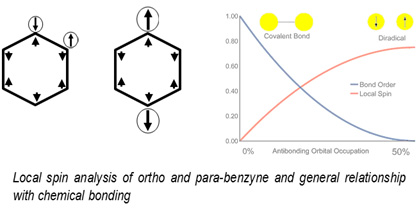
During the last years we have shown how to obtain other local physical magnitudes of interest through analysis of the wavefunction, such as local hardness (2007-08) or local spin (2012-14), the latter being used as a quantification of polyradical character (2014).
The implementation of Mayer’s effective atomic orbitals for a general wavefunction (2009, 2013) has allowed us to address the recurrent problem of obtaining oxidation states (2015, 2018) from first principles. We have thus developed the so-called effective oxidation states (EOS) analysis.
We have also proposed new atomic definitions less arbitrary in the fuzzy atoms framework (2013) as well as a significant number of applications, most recent ones involving transition metal systems with intricate bonding situations. Some more recent works have dealt with the application of these analysis techniques for the development of new correlation indicators (2014, 2016) oriented to the design of new DFT and DMFT functionals.

We are also currently joining forces with the group of Josep M. Luis focusing on the design and implementation of novel energy-based origin-independent decomposition of linear and nonlinear optical properties
All the new methodology that we’ve developed during the last 15 years is implemented in our own code, APOST-3D, which we have made available to the scientific community.
People
Funding
MICIU projects
Researcher: Dr. Josep Maria Luis and Dr. Pedro Salvador
Reference: PID2022-140666NB-C22
Funding: 131.250 €
Period: 01/09/2023 – 31/08/2026
Other projects
Researcher: Pedro Salvador and Josep Maria Luis
Funding: 118.500 €
Period: 2022-2026
Researcher: Pedro Salvador
Funding: Full site licence
Period: –
Collaborations
News
IQCC Science Slam 2025, October 8th 12:30h
Since 2015 the IQCC is organizing a Science Slam. On Wednesday October 8th the IQCC
PhD defense Gerard Comas Vilà
On 10th of June will be the defense of the doctoral thesis of Gerard
Hexaphenyl-1,2-Diphosphonium Dication [Ph3P–PPh3]2+: Superacid, Superoxidant, or Super Reagent?
The oxidation of triphenylphosphine by perfluorinated phenaziniumF aluminate in difluorobenzene affords hexaaryl-1,2-diphosphonium dialuminate 1. Dication 12+ is
Ana Rojas recives the WONNOW CaixaBank award
CaixaBank and Microsoft have just announced the winners of the WONNOW 2024 awards,

